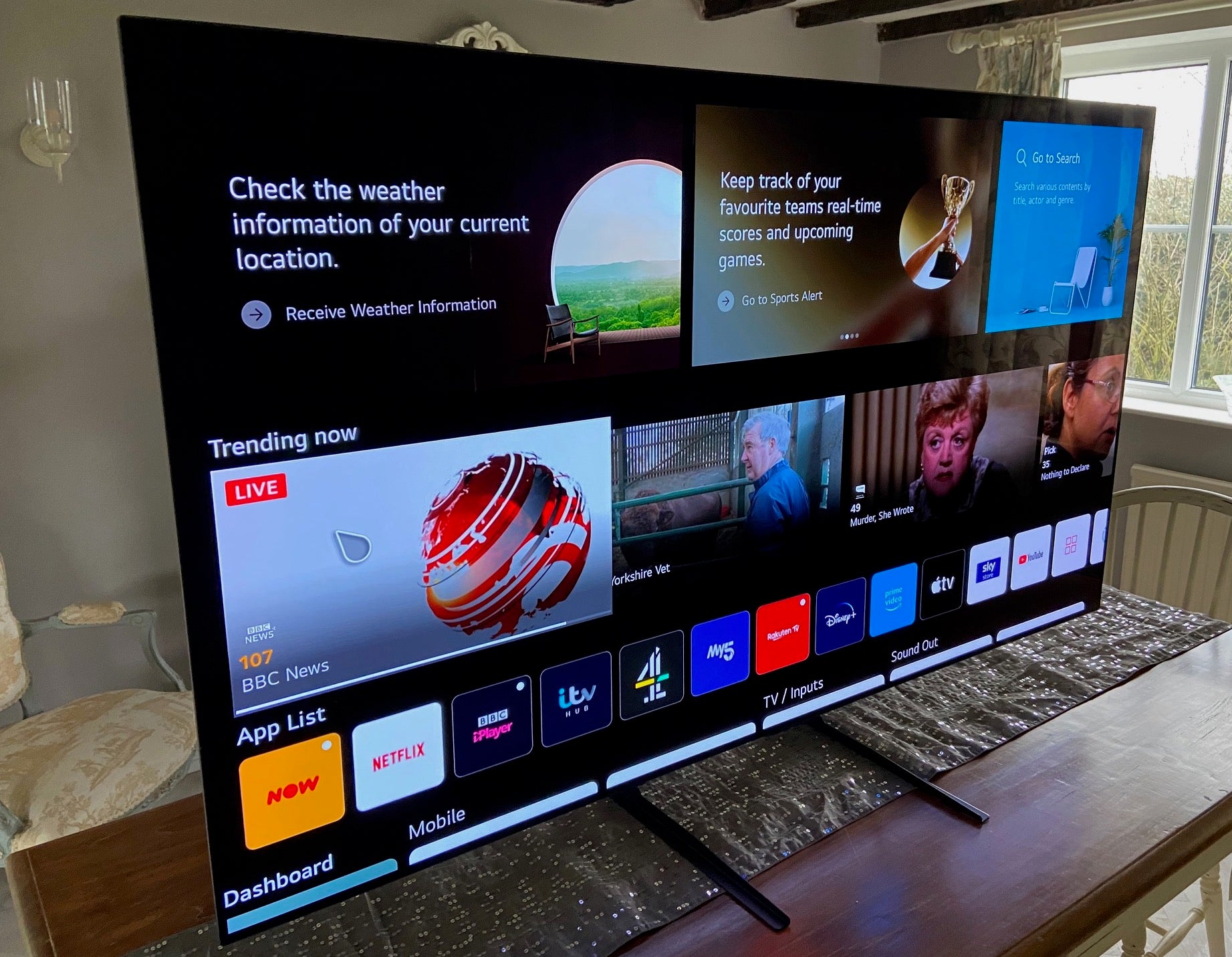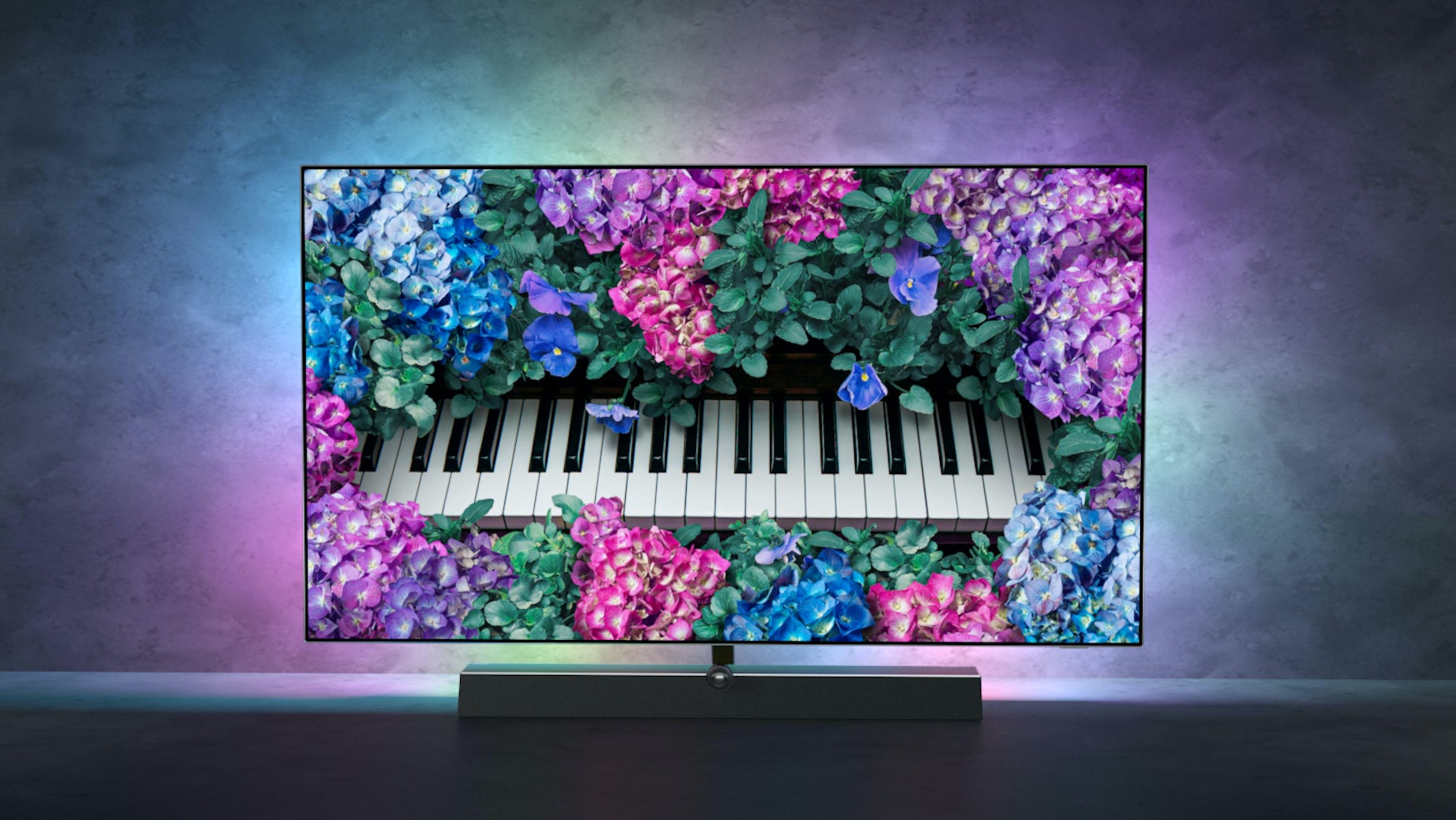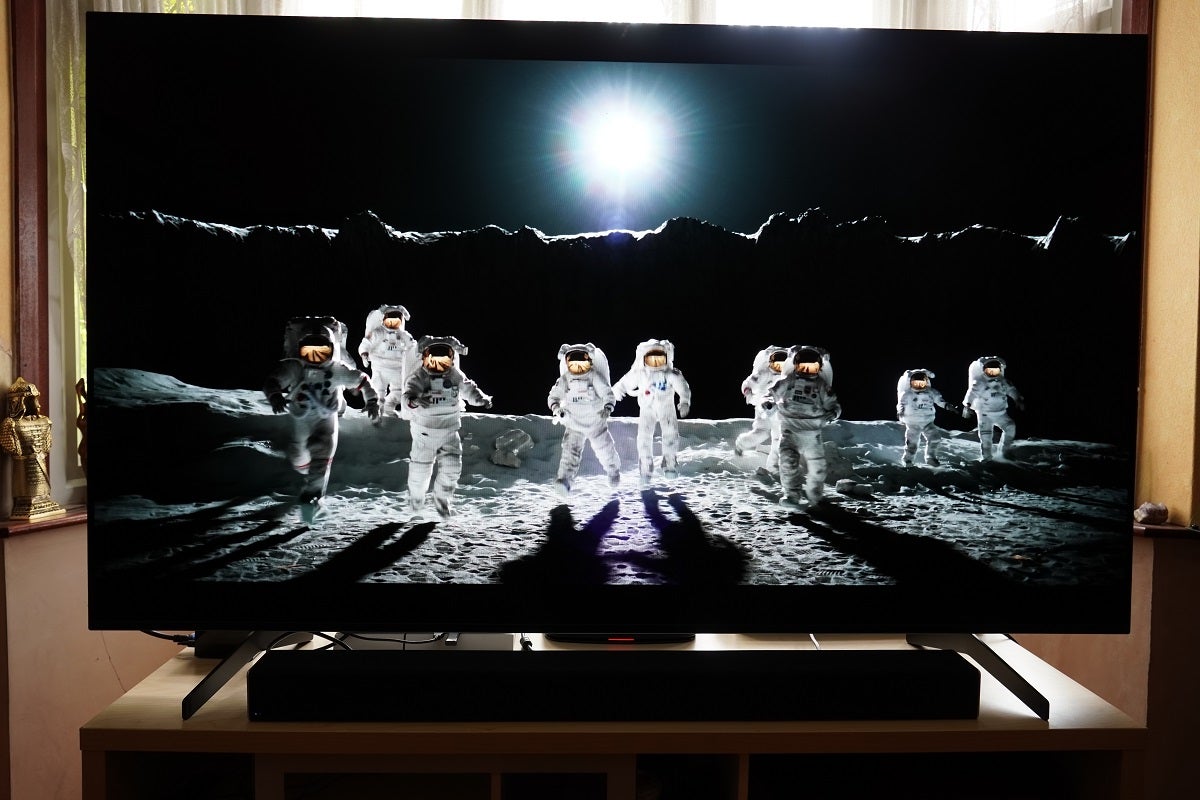Samsung QE65Q80T Review
Samsung 2020 TV range is off to a great start with the Q80T
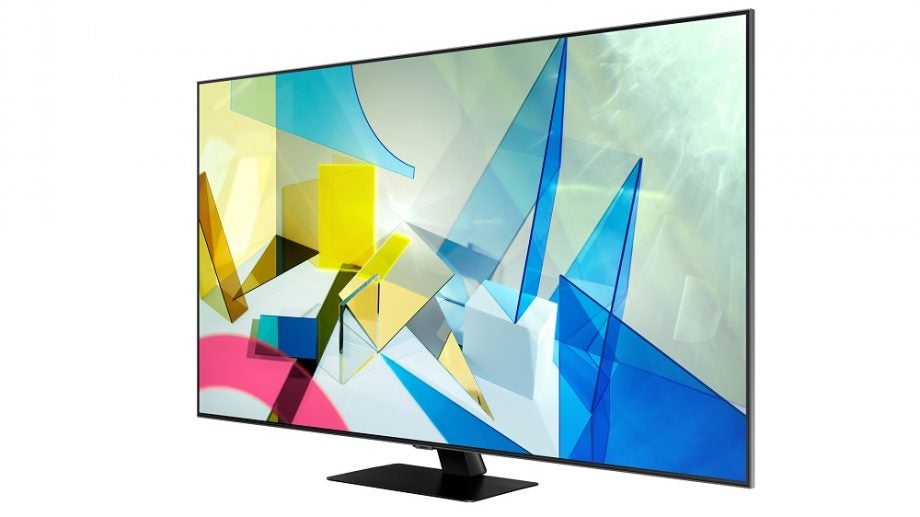

Verdict
The Q80T is an ambitious flatscreen offering punchy HDR, gorgeous colour and a surprisingly good black level performance. It’s a great choice for daylight viewing, but also makes for a lively home theatre experience.
Pros
- FALD backlight
- Impactful OTS audio
- Lightning fast gaming performance
Cons
- No Dolby Vision support
- No Freeview Play
Key specifications
- HDR10+
- OTS audio system
- Tizen smart platform
- Game Motion Plus processing
The Samsung Q80T (QE65Q80T) may be the entry-level 4k UHD screen in Samsung’s 2020 QLED FALD (Full Array Local Dimming) range, but it boasts class-leading sound and vision, cutting edge connectivity, a novel feature set and is borderline sensational when it comes to gaming.
Samsung, it seems, has come out of the 2020 gate blazing.
Sandwiched between the Q70T and range-topping Q90T, for many, it’ll represent a sweet spot in terms of performance and price.
Price and availability
The Q80T is not a replacement for the Q80R. It’s more an update on the Q70R. Alternate screen sizes comprise 49-, 55-, 75- and 85-inches, so there should be one to suit your needs.
The 65Q80T has a price of £2299/$1800/€2200/CAD$2599/AUD$2799. In the subsequent months since its release and ahead of the new Samsung TV range, its price had dropped to £1499.
Design and build quality
- Looks great
- No separate OneConnect box
- Comes with a standard and smart remote
Thanks to that full-array backlight, this 65-incher may have girth, but it uses design to great effect. The panel is surrounded by a chamfered gun-metal grey bezel, which makes it appear virtually frameless. A refreshingly sensible central pedestal stand also makes it easy to accommodate. There’s no separate One Connect box.
Connectivity comprises four HDMIs, one of which input 3 supports eARC, two USB ports, a digital optical audio output and both terrestrial and dual satellite tuner inputs.
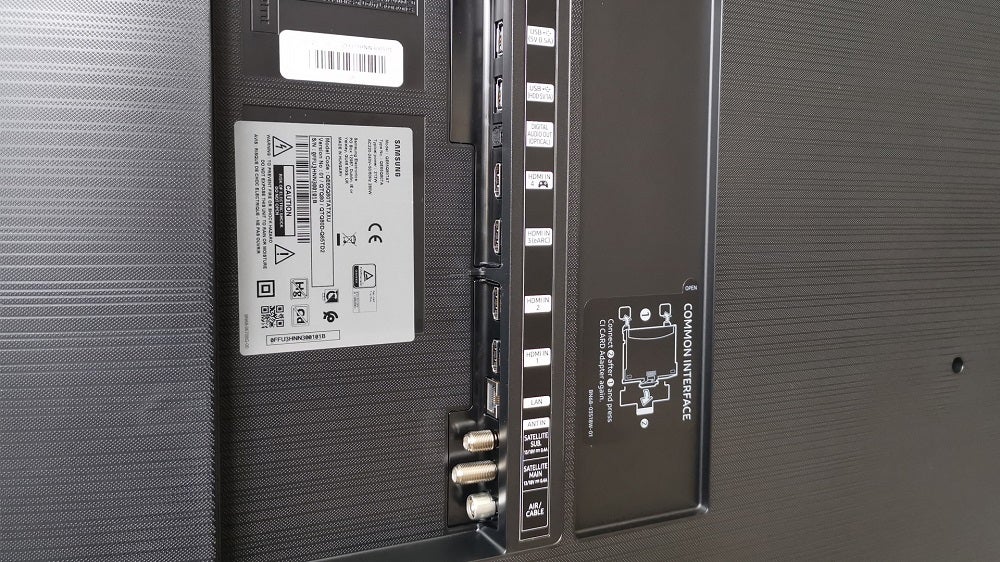
Digging deeper, we find the HDMIs on the Q80T have most of the functionality associated with HDMI v2.1, albeit without 8K (obviously).
With a nod to high-end gaming, there’s the promise of 4K@120fps support on one input (HDMI 4). The set can also manage 4K@60Hz (the ballpark expected for the PS5 and Xbox Series X), 2K@120Hz, VRR and ALLM. FreeSync support is included for PC gamers.
Supplied are two remote controls, one a standard zapper, the other a simplified clicker.
Software and features
- Tizen interface features lots of apps
- Best in class gaming input
- New Multi View feature
Smart connectivity is on the right side of excellent.
The Samsung Q80T features the latest iteration of the Tizen platform, which uses a two tier interface comprising launch bar and contextual thumbnails, and a raft of IP delivered Samsung Plus TV channels.
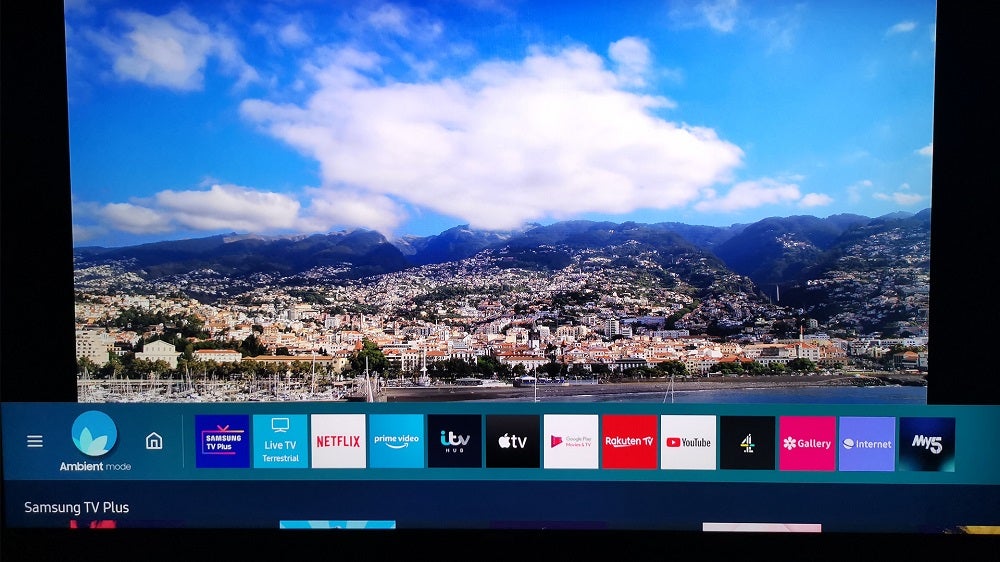
Interestingly, Samsung has shrunk the Tizen tiles to allow more streaming apps to sit on a screen at any given time. So less need to scroll.
Joining Ambient Mode this time around is Multi View, which enables two screens (the main TV image and your smartphone) to be watched simultaneously, via casting. Another feature likely to appeal to gamers who like to play alongside tutorials.
Conversely, Samsung has pushed the boat out when it comes to gaming support, and latency is stunningly low. This set doesn’t just offer a vanilla Games mode, it comes with Game Motion Plus processing, and a faux surround sound mode for 3D audio.
With this full enchilada engaged, the set still boasts a low latency of just 19.7ms (1080/60). However, switch off Game Motion Plus, and image lag drops to a best in class 8.7ms.
Picture quality
- Bright HDR performance
- Similar number of backlight zones to 2019 Q70R
- No Dolby Vision
If the Q80T were a pizza, it would come with all the toppings.
Samsung’s Quantum 4K image processor is arguably the most sophisticated on the market and employs a raft of innovative new techniques to make more of lower resolution HD sources. Colour, HDR, Clarity, Contrast and Motion – there’s a whole lot of remastering going on.
One cute example of the science at play is texture recreation. The silicon uses detail analysis and correlation estimation to convincingly interpolate more nuance into flora, fauna and fancy frocks. It works by analysing what detail is native in the image, comparing it to a texture database and then synthesising more of the same. The process gives regular Blu-ray discs a fresh lease of life.
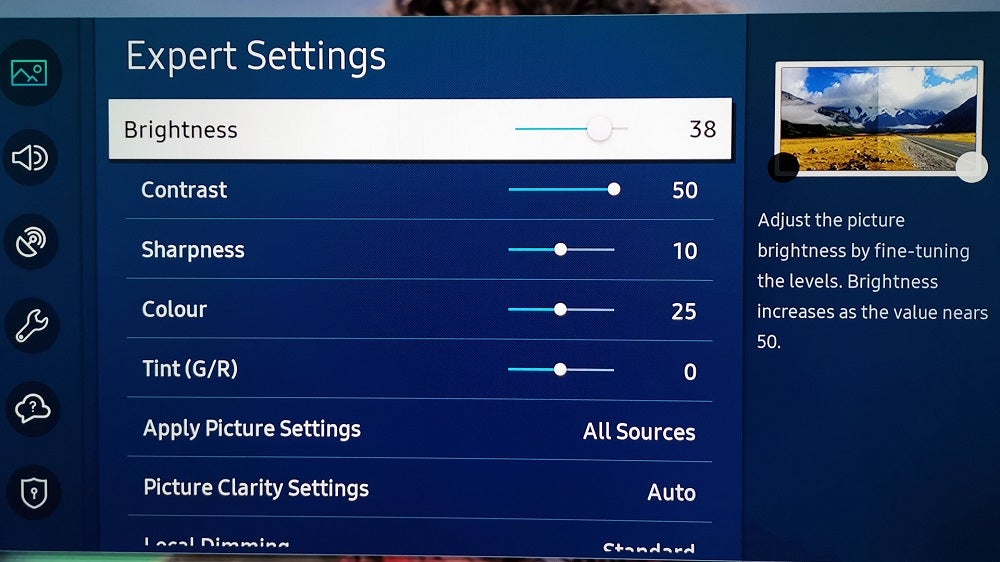
The screen’s image presets tend to emphasise the set’s inherent brightness. There’s a choice of Dynamic, Standard, Natural and Movie modes. Dynamic oversaturates, with livid primaries, but Standard and Natural prove to be good medians. The latter is a little more contrast heavy, at the expense of shadow detail, but does deliver slightly higher HDR specular peaks.
While the Samsung QE65Q80T doesn’t have as many backlight zones as the brand’s flagship FALD (the count is in line with last year’s Q70R), screen uniformity is reasonably high.
The most obvious challenge is the black bars seen when watching a letterbox movie. Here the Q80T sometimes struggles to be consistent, revealing blooming from brightly lit objects evident at the edge of the image frame. However, the effect tends to be transitory and not particularly intrusive.
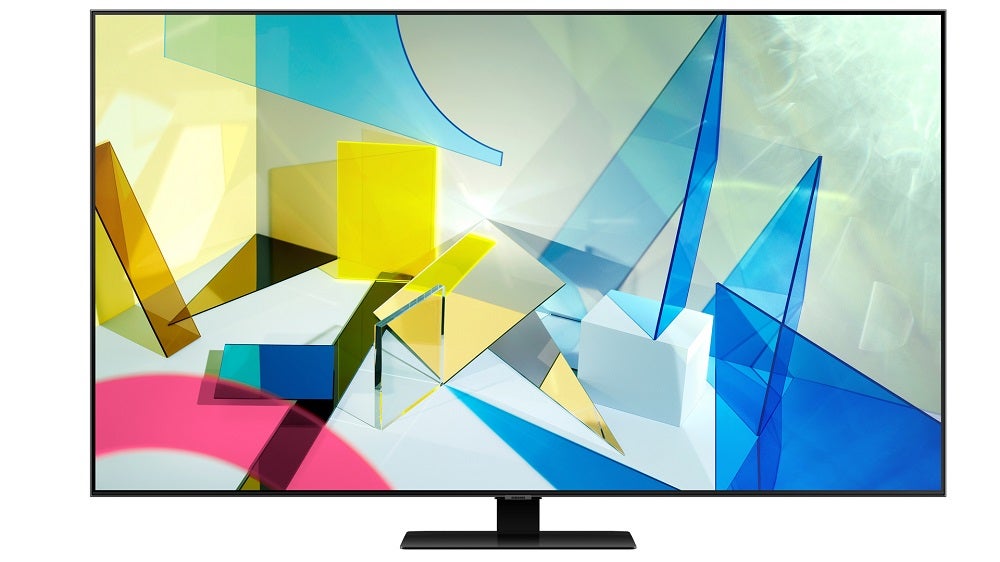
Samsung QLEDs typically come with extravagant HDR peak brightness claims, which should generally be taken with some marketing salt. But the Q80T acquits itself well, with the best figure just shy of 900 nits (cd/m2).
HDR covers HDR10 and HLG. There’s no support for Dolby Vision, leaving just HDR10+ in the dynamic metadata stakes.
Sound quality
- New OTS audio system
- Soundstage as big as the image itself
- Intelligent Sound Mode a mixed bag
Samsung describes the sound system on the Samsung Q80T as 2.2.2, recognition that this set offers OTS (Object Tracking Sound).
OTS boils down to more speaker drivers than lesser sets, placed low and high on the panel. Higher up the Samsung range you’ll find OTS+, which adds side speakers to the mix.
OTS works surprisingly well, allowing the screen to more fully present movies and music. There’s a sense of dialogue being locked to the image, even steerage as objects move around. The sound stage seems as big as the picture itself, and it’s tethered directly to the action.
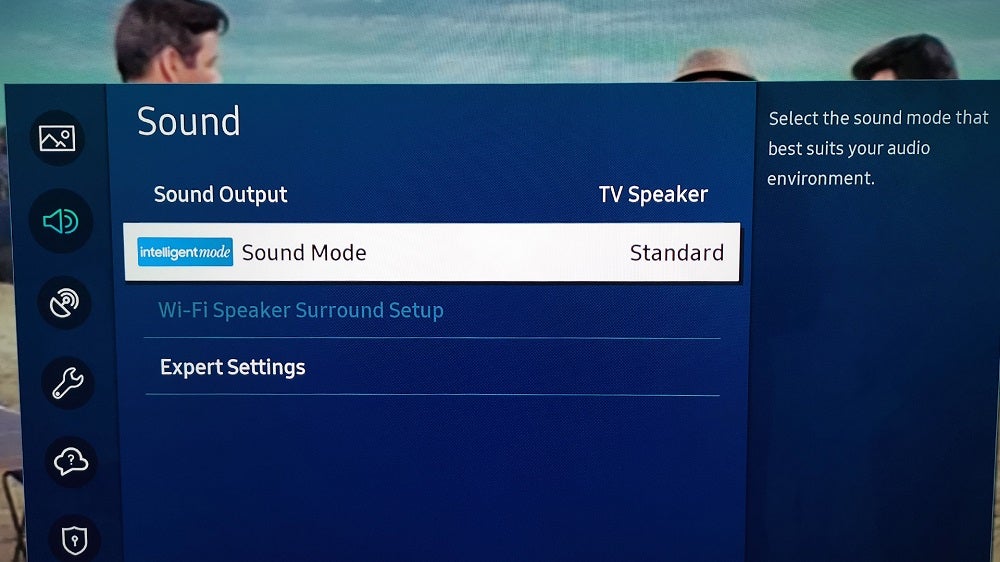
Total audio output is rated at 60W. In the real world, this translates to enough volume and presence for even moderately large rooms. It’ll also bitstream out Dolby Atmos to external audio hardware if you want to go full home cinema.
OTS is joined by an Intelligent Sound mode, which Standard and Amplifier settings. The result is a bit of a mixed bag. When engaged with speech, you can hear that the noise floor has been raised, which can result in an omnipresent background burble. But used for music, the presentation is pushed forward, which is rather fun.
You should buy it if…
-
An LCD with good black levels appeals
The Q80T is a great choice for daylight viewing but also makes for a lively home theatre experience.
-
You’ve got one of the latest consoles
The Q80T particularly shines as a gaming display. Even with a host of image enhancement turned on it, it still outperforms most all its rivals. Competitive Esports aficionados will appreciate its many skills.
-
You watch a lot of sub-4K content
HDR to UHD upscaling is hugely impressive.
You shouldn’t buy it if…
-
You watch Dolby Vision content
Movie fans will lament the lack of Dolby Vision support, as HDR10+ hasn’t had comparable traction.
FAQs
This TV has 4K@120fps support on one input (HDMI 4). The set can also manage 4K@60Hz, 2K@120Hz, VRR and ALLM. FreeSync support is included for PC gamers.
The HDR here covers HDR10, HDR10+ and HLG. There’s no support for Dolby Vision.
This TV features Bixby.
Specs
Jargon buster
HLG (Hybrid-Log Gamma)
HLG is a HDR format co-developed by the BBC and Japanese national broadcaster NHK for transmission of broadcast and live streamed content in HDR. It’s backwards compatible with SDR transmission standards, enabling people without a HDR TV to receive the same feed but downsampled.
Filmmaker Mode
Filmmaker Mode is a picture mode supported by some TV manufacturers that disables post-processing features (e.g. motion smoothing), and preserves the correct aspect ratios, colours and frame rates that respects the original author’s creative intent.
Upscaling
Upscaling refers to the process whereby a TV receives an image lower than its native resolution and fills in the missing information to create an image. Upscaling effectively guesses which pixels go where to make up the new image. The better the upscaler, the better the resulting image and with the advent of artificial intelligence, it has helped to make for more sophisticated guesses.
HDR10+
HDR10+ is a HDR format supported by Panasonic and Samsung as a free to use, open platform alternative to Dolby Vision. It adds dynamic metadata on top of the core HDR10 signal that tells a TV how it should adjust the brightness, colours and contrast of content for the most optimal picture quality.
QLED
QLED stands for Quantum-dot Light Emitting Diode. It’s a display technology that uses small particles (called Quantum Dots) made up of slightly different sizes that produce different wavelengths (colours) when light is shone through them. This filter helps to emit a brighter and wider gamut of colours than a conventional LED TV is capable of.
FALD
FALD stands for Full Array Local Dimming and is a more advanced version of Local Dimming technology. It divides a TV’s screen into zones where contrast/black levels can be controlled. In theory, the more zones there are, the more control over black levels and contrast there can be, resulting in a more dynamic looking picture.
HDR
HDR stands for High Dynamic Range and refers to contrast (or difference) between the brightest and darkest parts of an image. HDR content preserves details in the darkest and brightest areas of a picture, details that are often lost in old imaging standards. HDR10 is mandated to be included on all HDR TVs. It’s also supported by 4K projectors.
Q-Symphony
Q-Symphony combines a TV and soundbar speakers to play sound at the same time. They work in concert to track objects across the screen and produce a bigger soundstage. This is only supported by specific Samsung soundbars and premium QLED TVs.
Smart TV
A smart TV can connect to the internet, allowing them to stream online content over home Wi-Fi, connect to other devices (on the same network), as well as allowing the user wirelessly ‘cast’ content to the TV
OTS
OTS stands for Object Tracking Sound and is an audio technology created by Samsung available in their premium QLED TVs. It’s made up of speakers (both physical, and in some cases virtual) in the top, sides and bottom of a TV that can more accurately track objects on the display.
eARC
eARC (Enhanced Audio Return Channel) is the update to ARC and it boosts the bandwidth and speed, making room for object-based audio surround formats such as DTS:X and Dolby Atmos to be sent directly to an AV receiver/soundbar.

